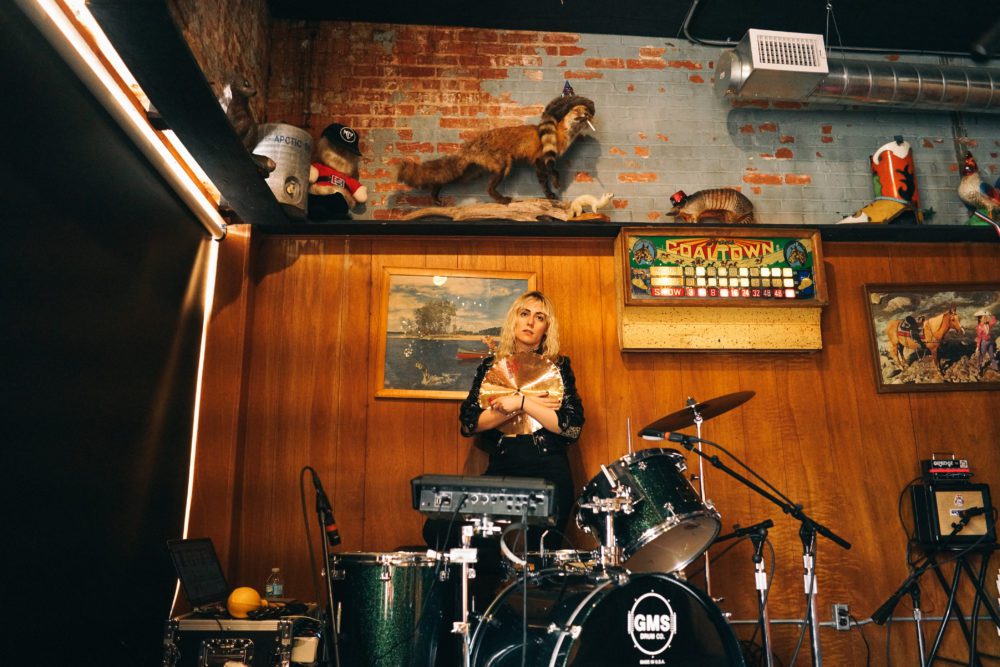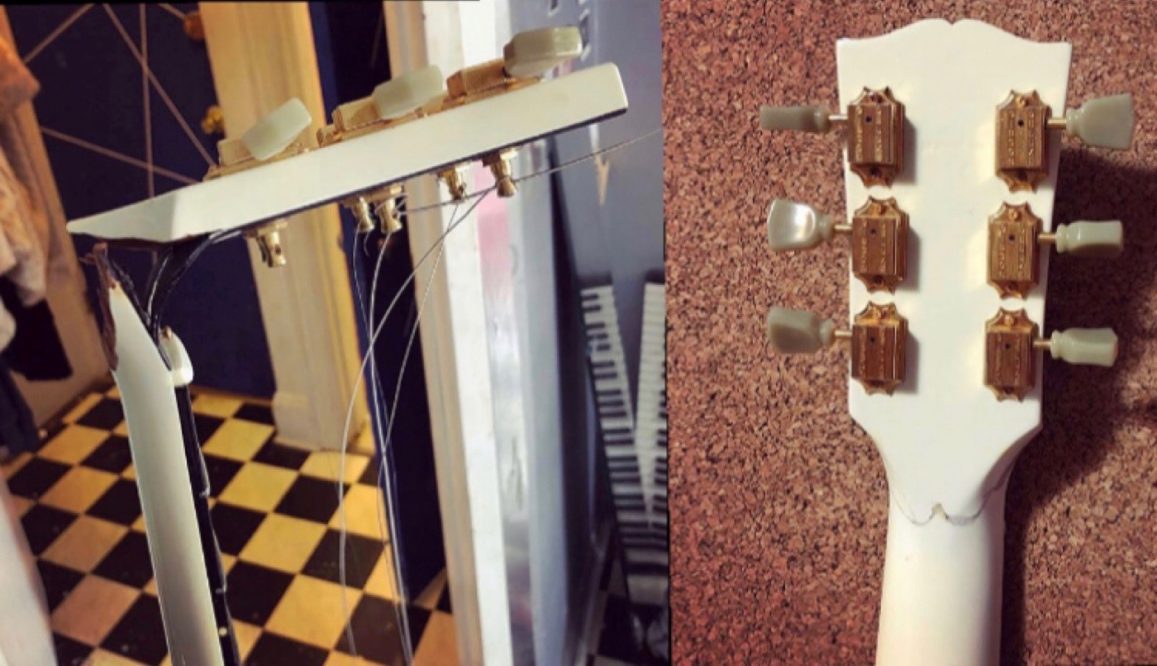
Welcome to our weekly show recommendation column RSVP HERE – your source for the best NYC shows and interviews with some of our favorite local live bands.

Lola Pistola does not plan on stopping anytime soon. With a raw energetic live show that’s not to be missed, Lola Pistola debuted their grunge and noise pop soaked album Curfew last year on Burger Records, toured the US with drummer Robert Preston (who also fronts Pink Mexico), and are closing out the year with a show at Our Wicked Lady on December 13 with Toward Space, Metalleg, and Johnny Dolphins.
Currently Brooklyn-based, Lola (aka Arvelisse Ruby) grew up in the Puerto Rican punk scene and is also a florist, photographer and contributor to AltCitizen. We chatted with Lola about her love for grunge and NYC’s ’70s punk scene, the changing landscape of New York’s current scene and what her live set would smell like.
AF: What is your favorite part about where you come from and where you are now, both geographically and musically? Where do you want to go?
LP: My favorite part about being from Puerto Rico is how important arts is for creatives and Puerto Ricans in general. No matter the occasion, there’s always music and a sense of community and bonding, whether it’s with family or friends. We have an unusual approach to what we do. I believe Puerto Ricans excel in arts, in music, in theater because we are just moved genuinely by what it means to be oneself and are passionate about our legacy. I loved loved loved being an spectator of the underground punk scene there. It’s chaotic, and loud, and there are many talented and unique bands that are still active after more than 15 years. I think that definitely made me fall in love with music, and learn about the punk scene around the world, specially in Spain and in New York. I’d daydream about playing at CBGB’s, about smoking cigarettes with Debbie Harry, reading poems with Patti Smith, maybe even finding Courtney Love and partying with her too. I feel like now, there’s a lot of that scene that’s undeniably dead. It’s no ones fault. Truly the world is just changing and affecting how we connect with new experiences – how we even promote shows for example. But still, the great thing about New York is the accessibility to local and touring bands, either underground or mainstream, and how there’s a new sound and act popping left and right. For me, I feel like I just want to continue making music, regardless of where I am, and to truthfully to be able to successfully connect with people. I want to continue moving forward where I can be heard, without worrying about scenes, without worrying about how many likes I get on social media. I want to go around the world and back until I fall down or nobody likes my songs anymore. That’s were I want to go.
AF: What shows/bands/artists have had the biggest influence and inspiration on your live set? If your live set was a color what color would it be? What smell would it be?
LP: Let’s just say I spent a lot of time watching Nirvana videos on YouTube using a shitty internet connection. Physically I take on more from movies and dance performances. If my set was a color it would be not a color, but the cathartic after-effect of strobe lights, hinted with the scent of salt water.
AF: If you could share the stage with anyone alive or dead who would it be and why?
LP: I’d love to perform with Iggy Pop, and I don’t think I need to explain why. Present Iggy Pop – full of wise and uncontrollable coolness, and more in control than ever of his voice and vision. His last two albums are definitely part of my favorites of the decade.
AF: When you’re performing do you ever look at a specific stranger and wonder how their day was?
LP: That’s interesting, but not really. I think the whole act, while performing is such an egocentric approach that I am only worried if they can really see me. If I lock eyes with anyone, I just want to make sure they see me.
AF: If you were a street performer and had to do something other than music, what would you do?
LP: A cartoonist.
AF: What are your plans for the next year/decade?
LP: I’m just waiting to be discovered and get a six figure contract, so I can record a couple of bangers and not work anymore. But also, joke aside, I just plan on doing what I do now, just 10 times bigger. I don’t have time to stop now.
RSVP HERE for Lola Pistola, Toward Space, Metalleg, Johnny Dolphins @ Our Wicked Lady on 12/13. 21+ $10
More great shows this week:
12/13 Pile, Patio, Gabby’s World @ (le) poisson rouge .16+ $16 RSVP HERE
12/13 Nation of Language, Modern Vices, Hideout @ The Broadway. 21+ $12 RSVP HERE
12/13 Mount Eerie, Julie Doiron (ex-Eric’s Trip) @ St. Ann & The Holy Trinity. All Ages $30 RSVP HERE
12/14 Honduras, Dentist, The Zings @ Baby’s All Right. 21+ / $12.50 RSVP HERE
12/15 Delicate Steve, Dirty Fences, Ackerman @ Brooklyn Bowl $16 21+ RSVP HERE
12/16 John Waters (A John Waters Christmas) @ Sony Hall. All Ages RSVP HERE
12/18 Desert Sharks, Atlas Engine, Shadow Monster, Climates @ Our Wicked Lady. 21+ $10 RSVP HERE
12/19 Samantha Urbani @ ELA Taverna (A Dinner Party). 21+ $50 RSVP HERE
12/19 Silent Night Fest: A Sleep Well Records Holiday Celebration with pronoun + Special Guests @ Elsewhere. 16+ $10 RSVP HERE




